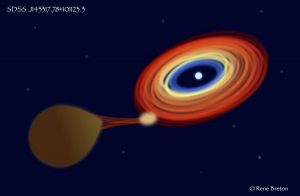evoluzione stellare
VISTA rivela stelle nascoste
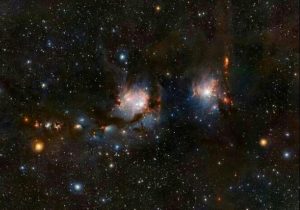
In questa nuova immagine della nebulosa Messier 78 giovani stelle gettano un velo bluastro sui loro dintorni, mentre stelle rosse nascenti fanno capolino dai loro involucri di polvere cosmica. Continua a leggere
Hubble rileva giganteschi “proiettili” sparati da una stella
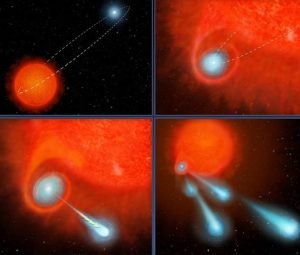
Il telescopio Hubble ha rilevato gigantesche bolle gassose estremamente calde espulse nei pressi di una stella morente, ormai negli stadi finali della sua esistenza. Continua a leggere
Mondi in fuga
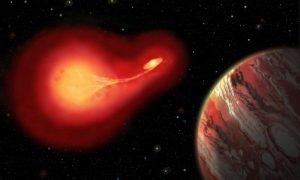
I pianeti in orbita attorno a due soli potrebbero sorprendentemente sopravvivere alle violente fasi finali dell’evoluzione delle loro stelle, secondo un nuovo studio. Continua a leggere
Bracci di spirale per una planetaria
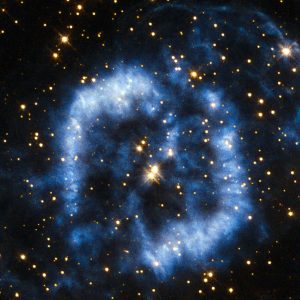
I due bracci di spirale che si dispiegano dal centro di questa spettacolare immagine potrebbero far pensare ad una galassia. Ma questo oggetto è di natura diversa: PK 329-02.2 è una nebulosa planetaria all’interno della Via Lattea. Questo che osserviamo è l’ultimo respiro di una stella morente. Continua a leggere
SOFIA osserva la nascita di giovani stelle
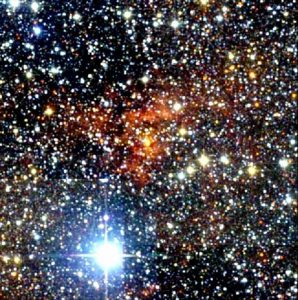
L’osservatorio SOFIA (Stratospheric Observatory for Infrared Astronomy) della NASA ha individuato parti di sei nubi interstellari in fase di collasso gravitazionale, sul punto di generare nuove stelle, astri che probabilmente un giorno saranno più grandi del nostro Sole. Continua a leggere
Proxima Centauri più simile al Sole del previsto
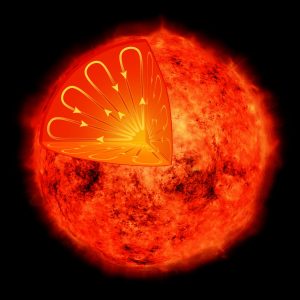
In Agosto gli astronomi hanno annunciato che la vicina stella Proxima Centauri ospita nella zona abitabile un pianeta di dimensioni terrestri, l’ormai famoso Proxima b. La stella è una piccola, fredda nana rossa con una massa di un decimo di quella solare e una luminosità di un millesimo. Tuttavia una nuova ricerca dimostra che è simile al Sole in un modo sorprendente: ha un ciclo regolare di macchie stellari. Continua a leggere
Giovane, rara, gigantesca, ancora in formazione
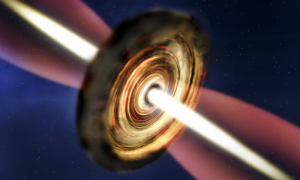
Gli astronomi hanno identificato una giovane stella, localizzata a circa 11.000 anni luce di distanza, che potrebbe aiutarci a comprendere la formazione e l’evoluzione nell’Universo degli astri più massicci. Questa stella ancora adolescente, ma con una massa di ben 30 volte quella solare, sta raccogliendo materiale dalla nube molecolare da cui si è formata, ed è destinata probabilmente a diventare ancora più massiccia quando infine raggiungerà l’età adulta. Continua a leggere
Viaggio cosmico di una nebulosa a forma di farfalla
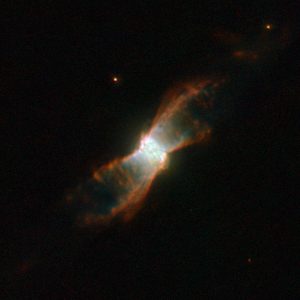
Il telescopio Hubble ha immortalato un’affascinante nebulosa planetaria, simile ad una delicata farfalla, denominata NGC 6881.
Situata nella costellazione del Cigno, è formata da una nube interna, che si estende per circa un quinto di anno luce, e da “ali” simmetriche che si espandono per circa un anno luce da un’estremità all’altra. La simmetria potrebbe essere dovuta ad una stella binaria nel centro della nebulosa. Continua a leggere
Cannibalismo Stellare
Gli astronomi hanno rilevato un oggetto sub-stellare che era una stella, ma è stato consumato dalla sua compagna nana bianca. Un team internazionale di astronomi ha fatto la scoperta osservando un sistema binario molto debole, J1433 che si trova a 730 anni luce di distanza.
